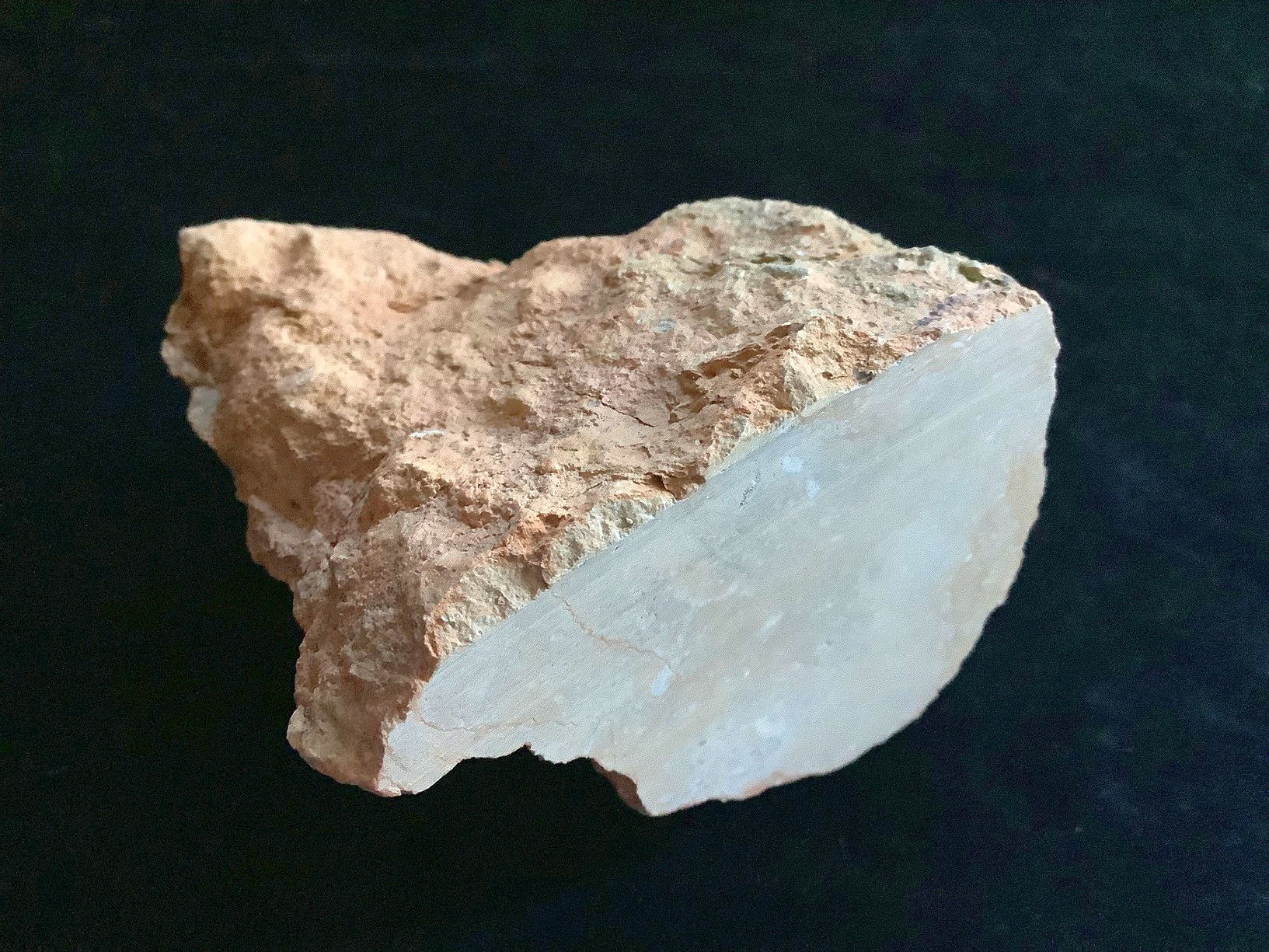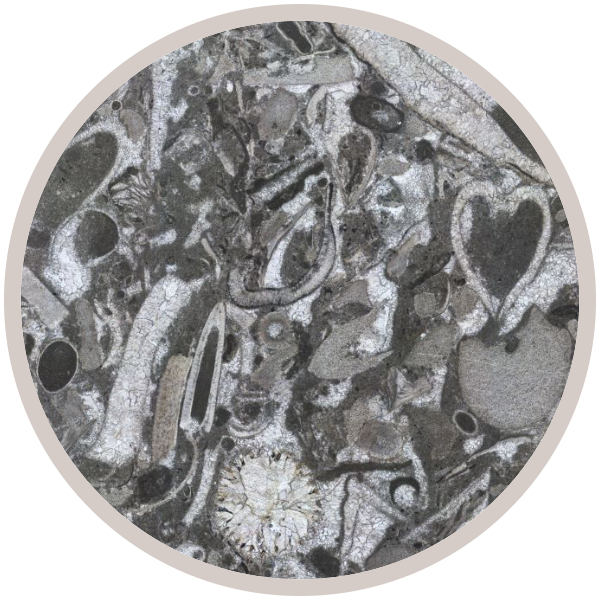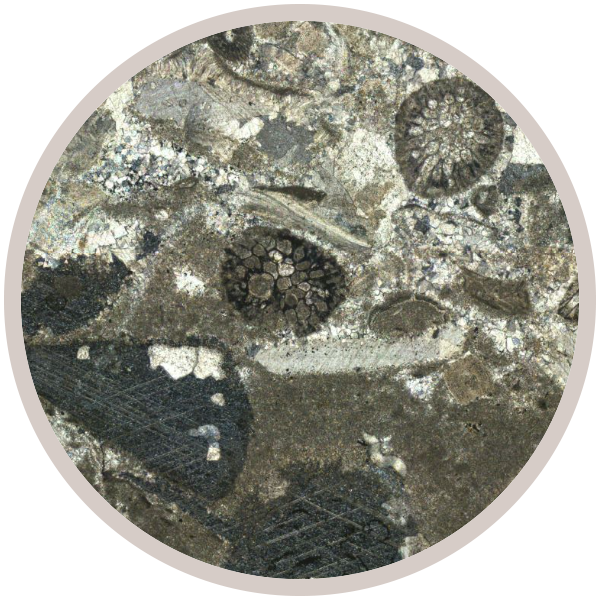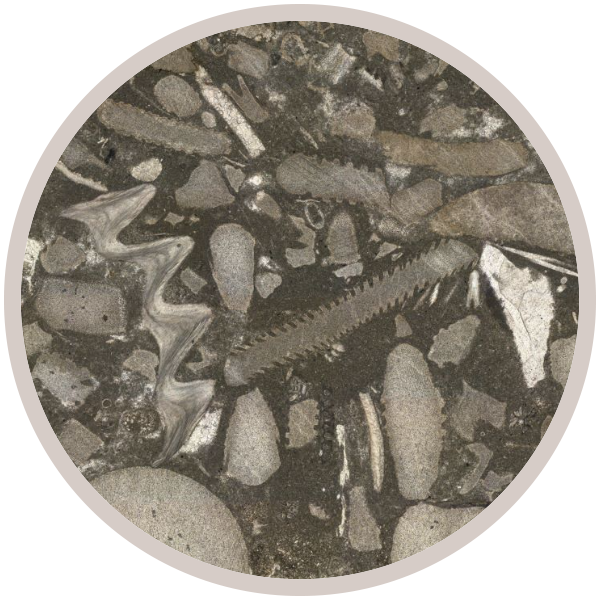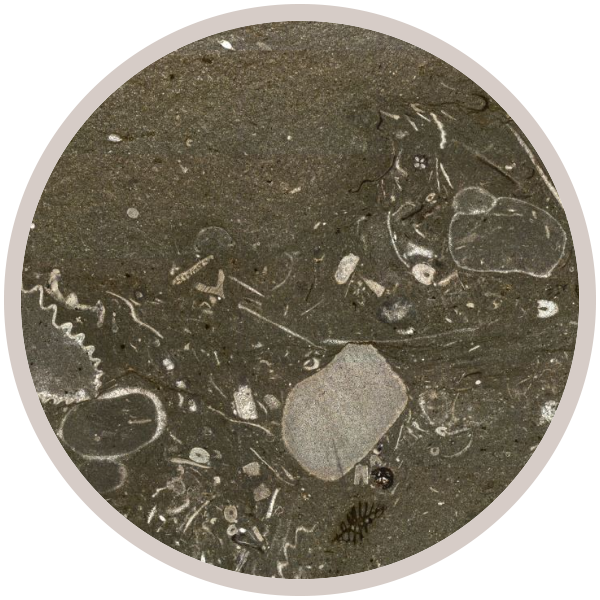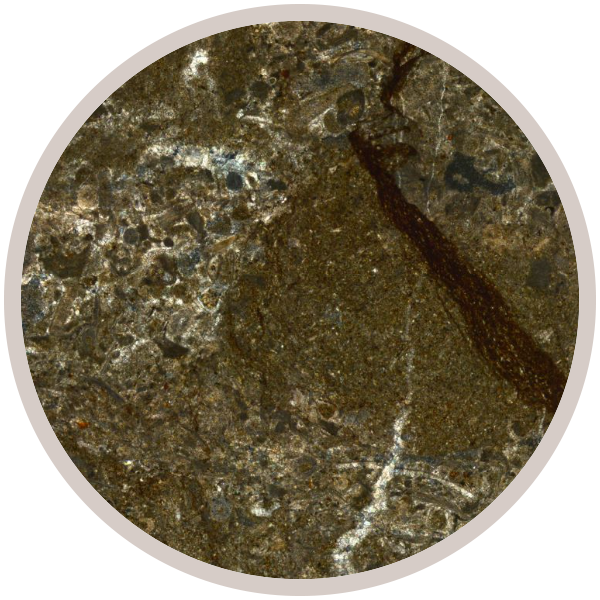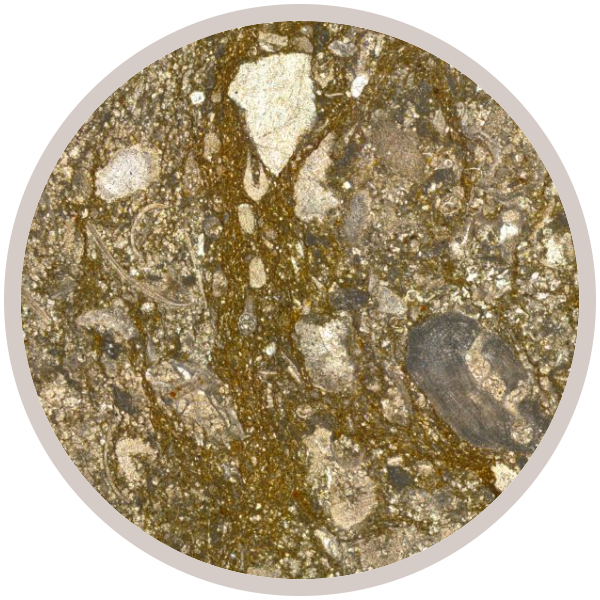
Fact sheet
This sample is a muddy limestone of Silurian (Wenlock) age, with numerous fossil fragments (bioclasts) embedded in fine-grained, brown micrite (microscopic particles of recrystallized lime mud). This sample has been weakly altered by hot fluids percolating through the rock from a nearby fault zone. The sinuous, dark brown seams wriggling through this section represent deposits of insoluble iron oxy-hydroxides, which may have been deposited as the fluids passed through.
The limestone was laid down in a shallow tropical sea south of the equator around 428 million years ago. The area of Wren's Nest featured small coral reefs teeming with life, separated by shallow banks and troughs of lime mud.
The limestone reefs were home to compound and solitary corals, bryozoans, crinoids, brachiopods, gastropods, cephalopods and trilobites. Fossils visible in this thin section probably represent broken shell debris washed into a muddy trough. These include fragments of crinoid stem, echinoderm plates, fibrous brachiopod shells, bryozoans and corals. There is a lovely section through a spiral gastropod in the lower left corner, infilled with micrite. Many of the fossils appear indistinct; they may have been partially dissolved during the fluid percolation.
Some pale patches in the thin section represent voids infilled with crystalline (sparry) calcite, which may have replaced dissolved bioclasts or infilled voids. There is marked colour variation in the fine-grained matrix of this sample, which may reflect variation in the micrite when deposited, or heterogeneous alteration by later fluid - or both.
This sample was collected as part of the 'Macro to Micro' project.
This Collection showcases the geodiversity of a classic geological site: the Wren's Nest National Nature Reserve in the West Midlands.
As well as displaying thin section and hand specimen views along with information setting them in the context of their landscapes, we also include perspectives and creative responses to the geological heritage of the sites from the local community.
| Explore the stories of the rock layers at Saltwells and Wren's Nest NNRs, designed by students at King Edward VI School, Stourbridge: |
This Collection was made possible by funding awarded to the 'Macro to Micro' project by the Natural Environment Research Council (NERC) under their 'Growing Roots' scheme.
